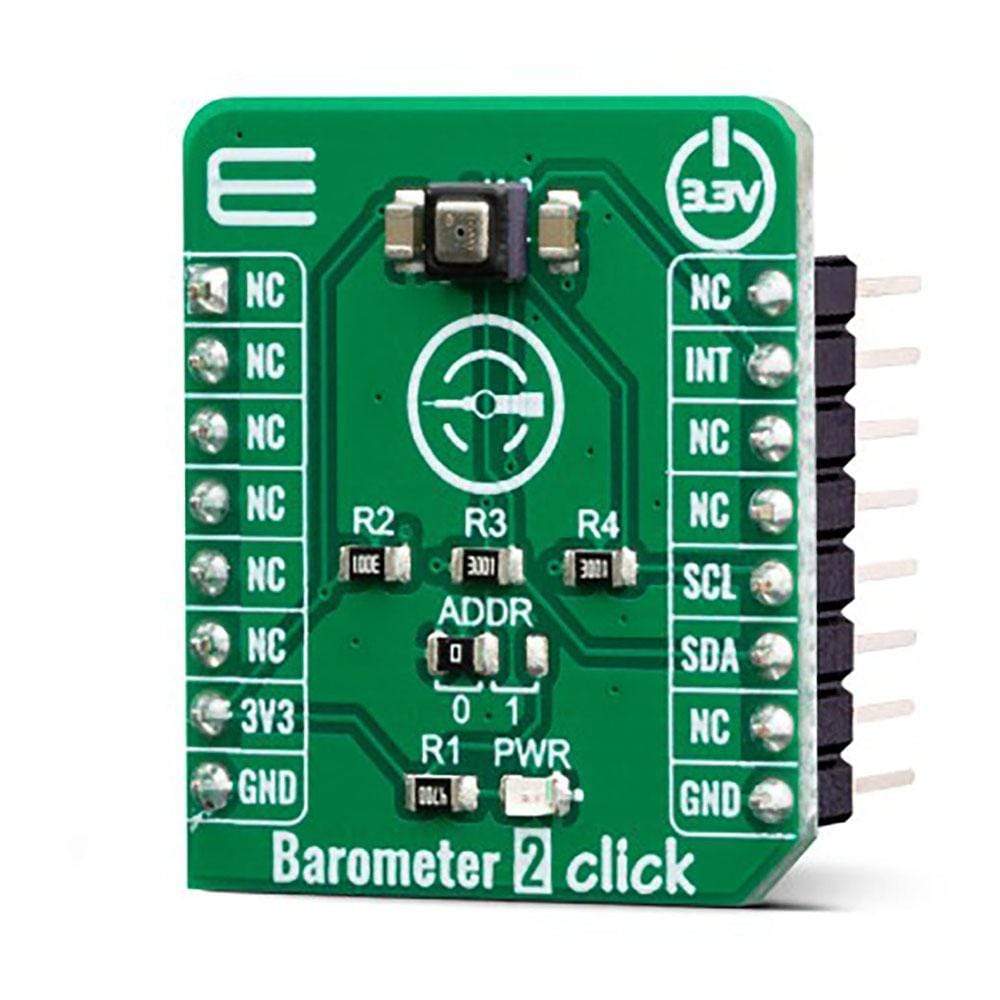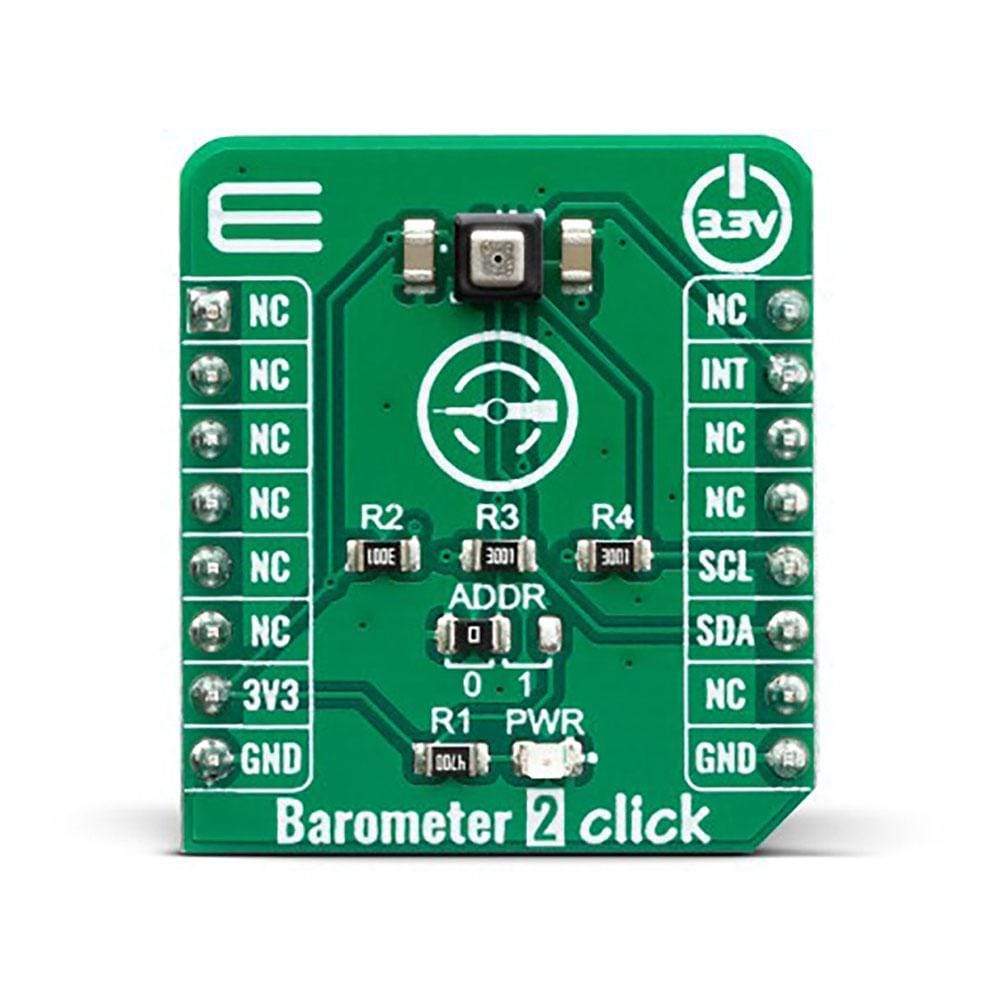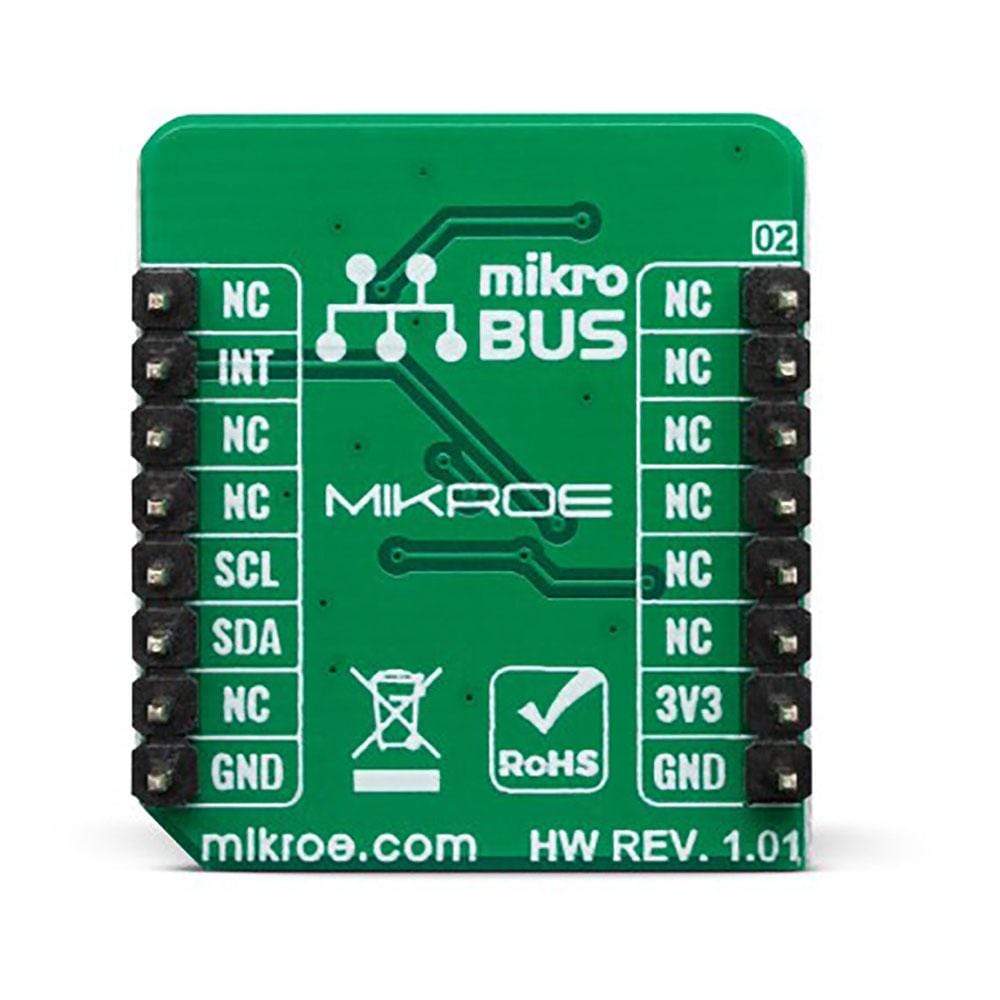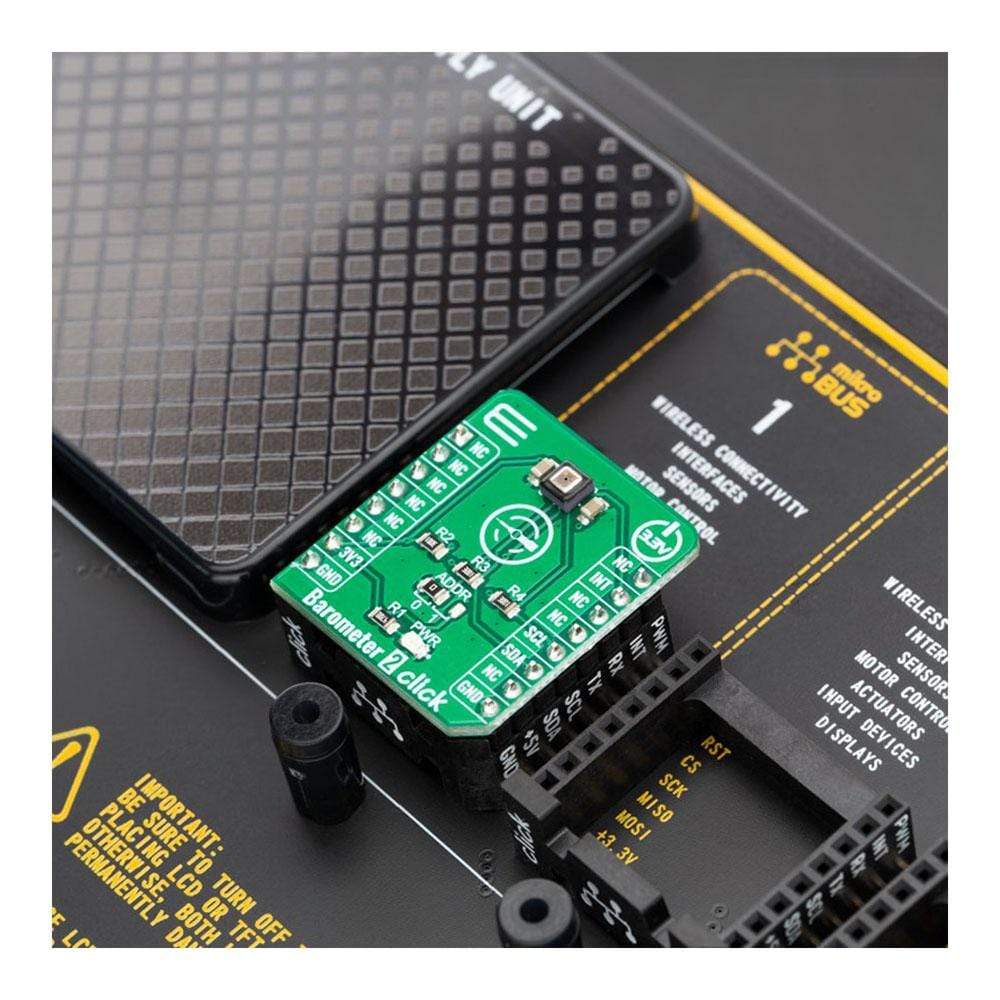



Overview
The Barometer 2 Click Board™ is a digital barometer on a Click Board™. The Barometer 2 Click Board™ is equipped with the LPS35HW, an absolute piezoresistive pressure sensor with the ceramic, water-resistant package, manufactured using proprietary technology. This sensor offers many benefits, including low power consumption, high resolution of the pressure data, embedded thermal compensation, FIFO buffer with several operating modes, temperature measurement, etc. The most distinctive feature of this sensor is its ability to measure the pressure within the wide range between 260 - 1260hPa, offering calibrated readings over the I2C digital interface.
Downloads
Le Barometer 2 Click Board™ est un baromètre numérique sur Click Board™. Le Barometer 2 Click Board™ est équipé du LPS35HW, un capteur de pression piézorésistif absolu avec boîtier en céramique résistant à l'eau, fabriqué à l'aide d'une technologie exclusive. Ce capteur offre de nombreux avantages, notamment une faible consommation d'énergie, une haute résolution des données de pression, une compensation thermique intégrée, un tampon FIFO avec plusieurs modes de fonctionnement, une mesure de température, etc. La caractéristique la plus distinctive de ce capteur est sa capacité à mesurer la pression dans une large plage entre 260 et 1260 hPa, offrant des lectures calibrées via l'interface numérique I2C.
| General Information | |
|---|---|
Part Number (SKU) |
MIKROE-3603
|
Manufacturer |
|
| Physical and Mechanical | |
Weight |
0.025 kg
|
| Other | |
Country of Origin |
|
HS Code Customs Tariff code
|
|
EAN |
8606018716043
|
Warranty |
|
Frequently Asked Questions
Have a Question?
Be the first to ask a question about this.




